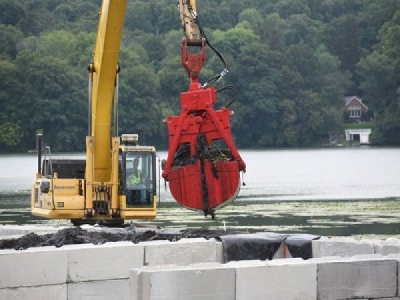
Posted on November 17, 2016
By James M. O?Neill, NorthJersey.com
As part of its ongoing cleanup of contaminated sediment in Pompton Lake, Chemours is moving ahead with a more complicated way to treat wastewater to ensure it doesn’t have elevated levels of pollutants before it gets pumped back into the lake.
The company, which was spun off from DuPont last year, has received permission from the state Department of Environmental Protection to use a series of chemicals to treat the water that it squeezes out of dredged sediment from the lake.
When the project started, the water removed from the sediment was being treated mechanically to let particles with contamination settle out. But when the company tested the water, it still had elevated levels of mercury, copper and organic carbon.
So Chemours stopped pumping the treated water back into the lake. It brought in an extra storage tank to hold the water it squeezed from dredged sediment until it could develop the improved treatment process. With the extra tank in place, dredging the contaminated sediment continued without disruption.
The more complicated process will treat the water with a series of “food-grade” chemicals, said Perry Katz, remedial project manager with the Environmental Protection Agency, which is overseeing the cleanup.
The three-year, nearly $50 million dredging operation will ultimately remove 130,000 cubic yards of contaminated sediment from the lake bottom. The contamination comes from the former DuPont munitions facility in Pompton Lakes and Wanaque. The pollution was carried to the lake from Acid Brook, which flows through the old DuPont site.
The facility operated from 1902 to 1994, making blasting caps, metal wires and aluminum and copper ammunition shells for the U.S. military. The EPA wants the sediment removed because a toxic form of mercury can build up in fish, posing a health risk to people who eat them. Exposure to mercury can damage the human nervous system and harm the brain, kidneys, heart, lungs and immune system.
The dredging began on Aug. 31 after years of studies, reports, delays and conflicts involving the EPA, residents and DuPont. The 200-acre Pompton Lake, bordered by Pompton Lakes, Wayne and Oakland, is a backup source to replenish a reservoir that supplies drinking water to towns in Bergen and Passaic counties.
Chemours initially created a shallow channel through the lake muck so a barge, loaded with dredging equipment, and scows, to carry dredged material, could float out to several small areas of the lake that total about 3 acres for cleanup there. Dredging those areas should be finished by early next month.
More than 800 truckloads of sediment have been removed so far.
Then a layer of fill will be placed on the lake floor to provide habitat for aquatic organisms. Work should shut down by mid-December. Katz said the work is on schedule.
Next year, dredging of a larger 36-acre area of the lake will take place. In the third year of the project, restoration along the shoreline will take place.
About 3,742 gallons of contaminated water were pumped back into the lake over a 55-minute period on Sept. 6, and sample test results from a lab indicated the elevated levels of contamination. As a result, no more water was pumped into the lake.
The water squeezed out of the dredged sediment contained 11.8 parts per billion of mercury, exceeding the state permit limit of 1 part per billion, according to a letter sent to the state Department of Environmental Protection by Sevenson Environmental Services Inc., the contractor handling the dredging for Chemours.
Copper levels were at 102.7 parts per billion, compared with the permit maximum of 100, and organic carbon was at 29.2 parts per million, while the permit allows a maximum of 20 parts per million.
Officials said the contaminants did not pose a human health risk.
Source: NorthJersey.com





